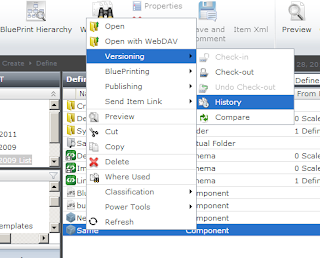From a publication an item is local to (localized or in a parent publication), an authorized author (with read/write/delete permissions) can do the following:
Right-click > Versioning > History


Component presentations (CPs) are simply the combination of some content (a component in Tridion) and how it displays (with a template in Tridion). When created by an author, these CPs on a page display according to page template rules. CPs on a Page are a Good Thing. They are appropriate with context, placement, and order matters. CP behavior is configured in your Component Templates.
This lets me quickly add pictures, diagrams, and text to Visio designs by clicking and dragging them onto Visio's drawing area. For example I created the following building block summary and "refreshed" some existing diagrams.